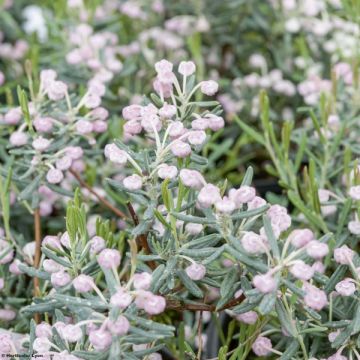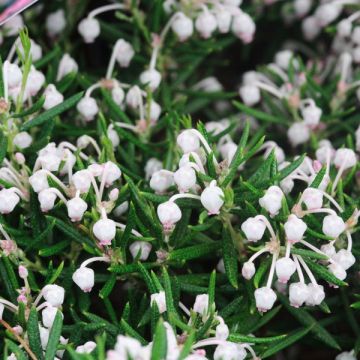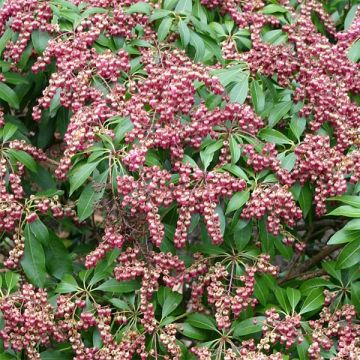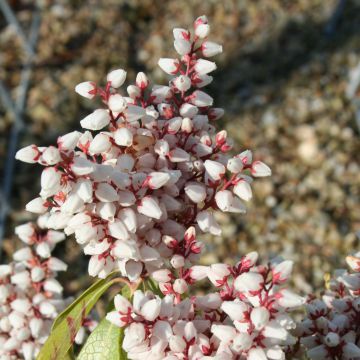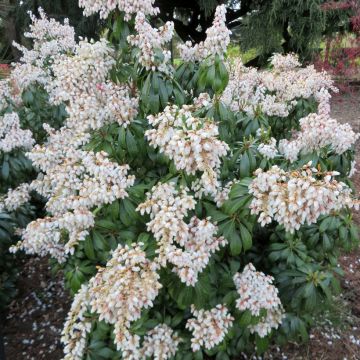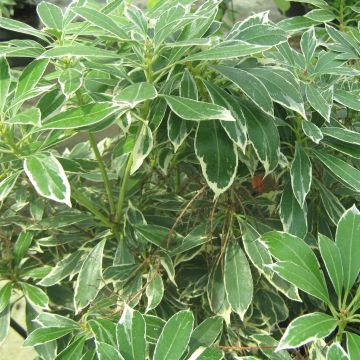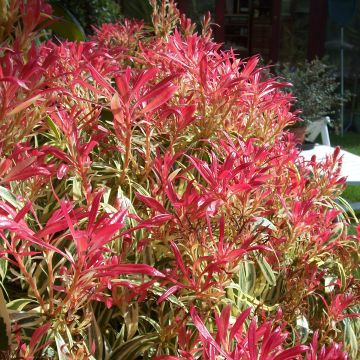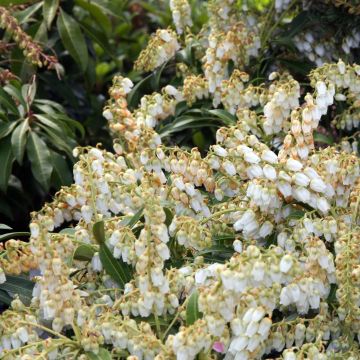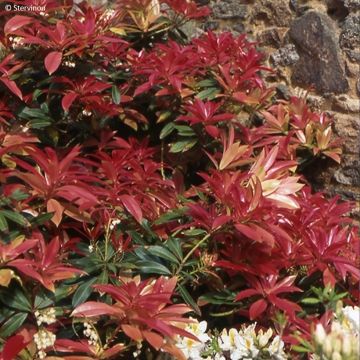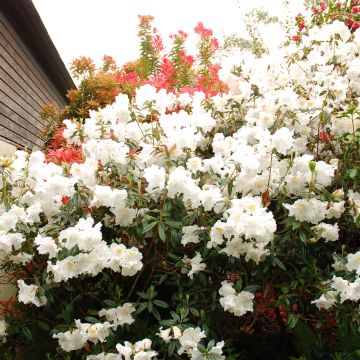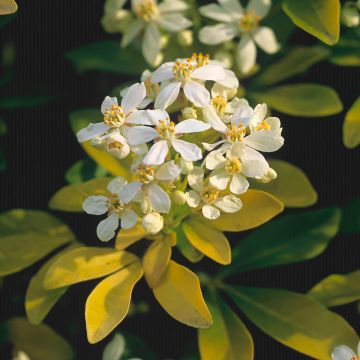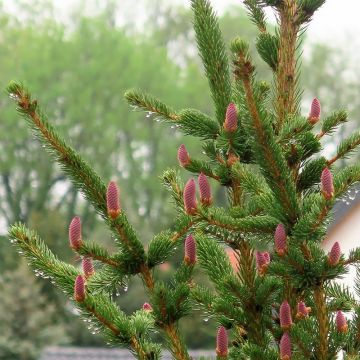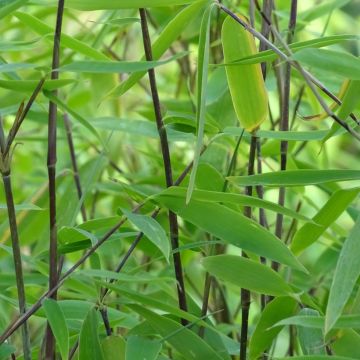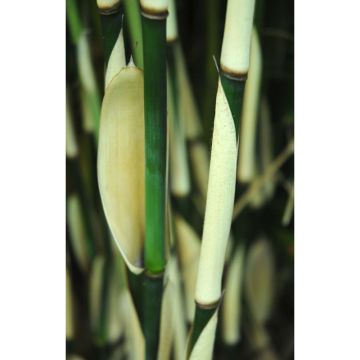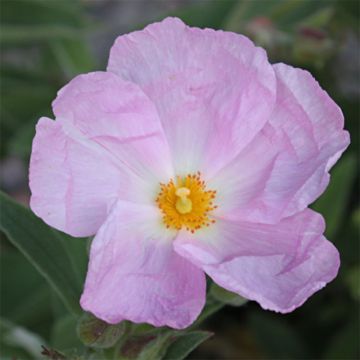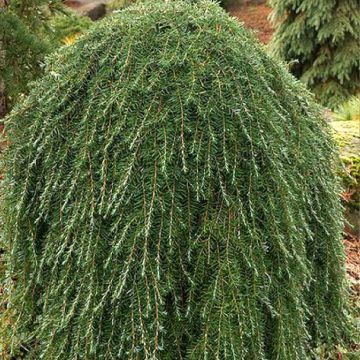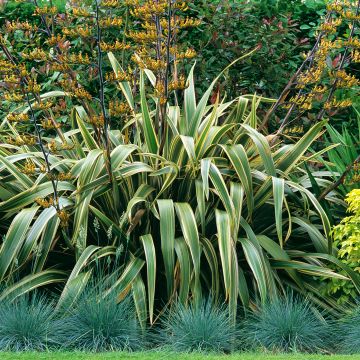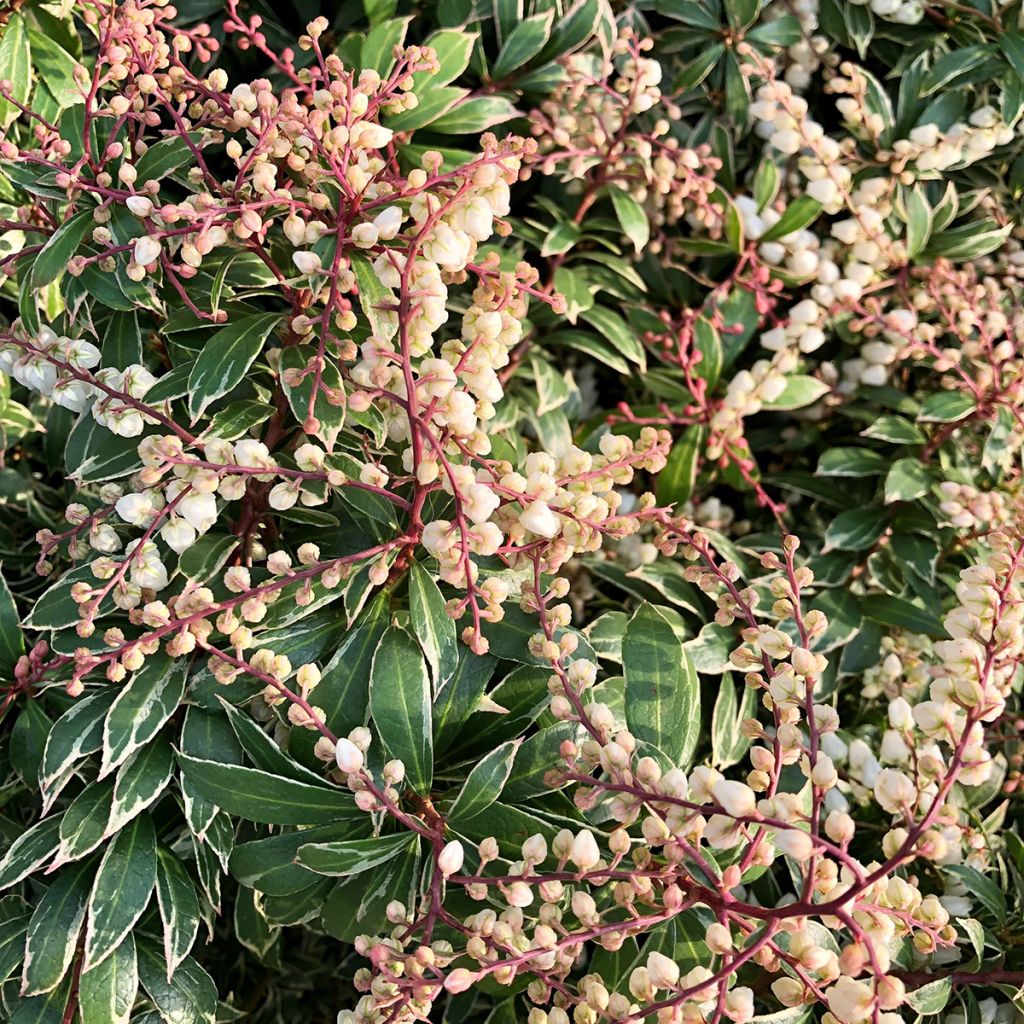

Andromède du Japon - Pieris japonica Little Goldy
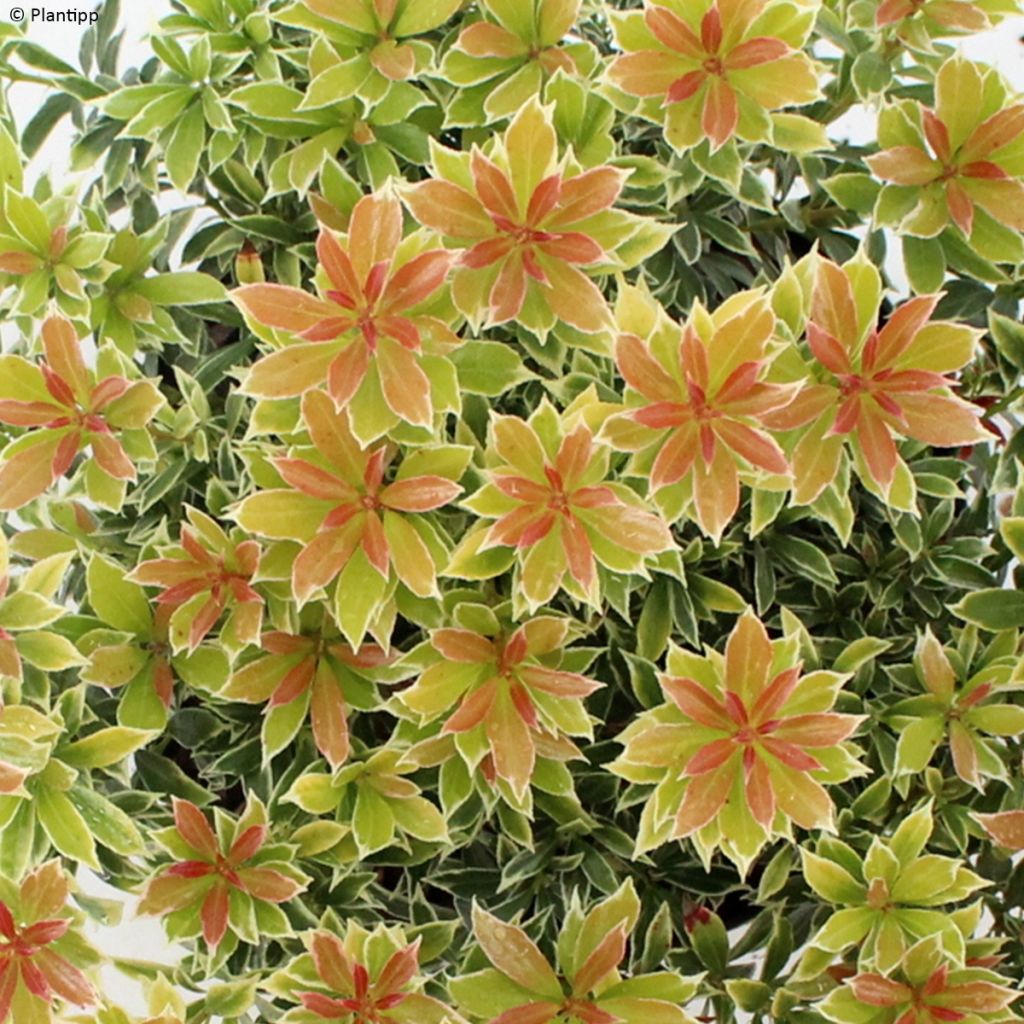

Andromède du Japon - Pieris japonica Little Goldy®
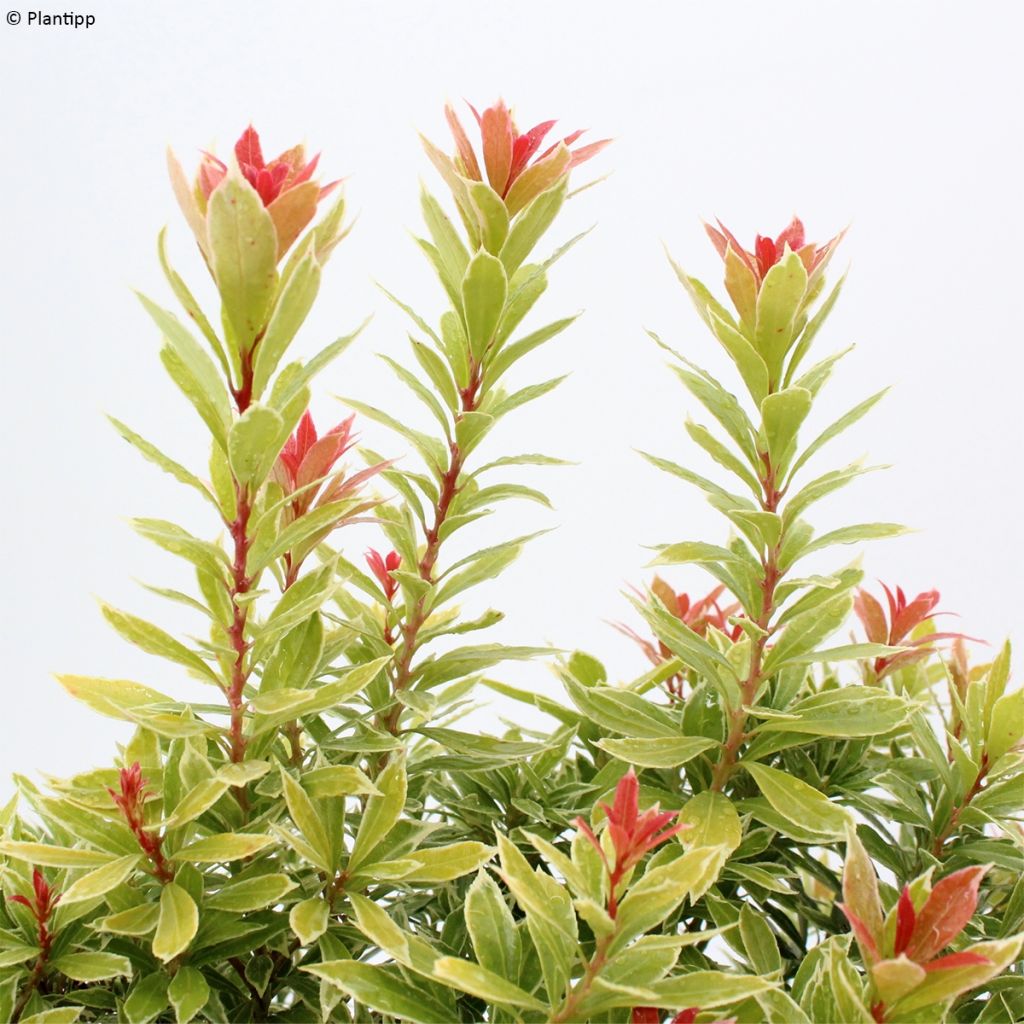

Andromède du Japon - Pieris japonica Little Goldy®
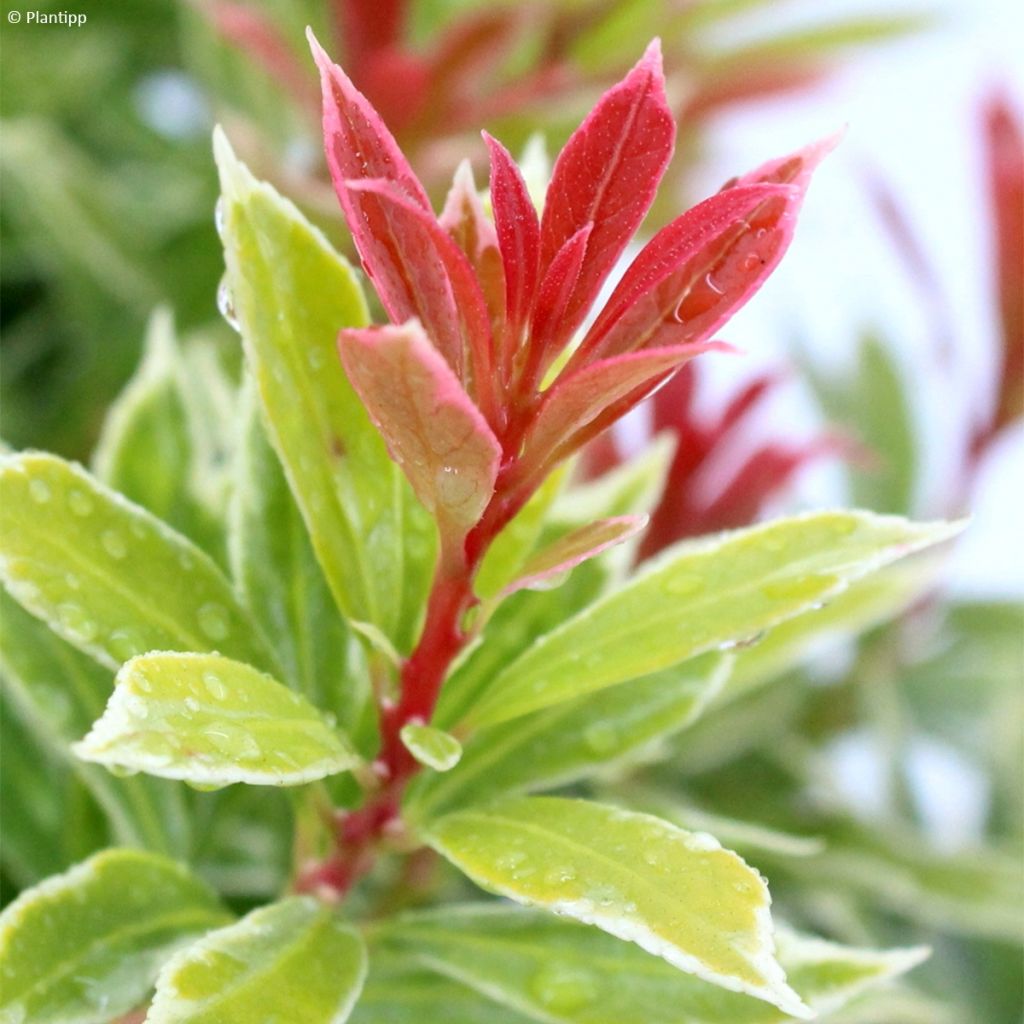

Andromède du Japon - Pieris japonica Little Goldy®
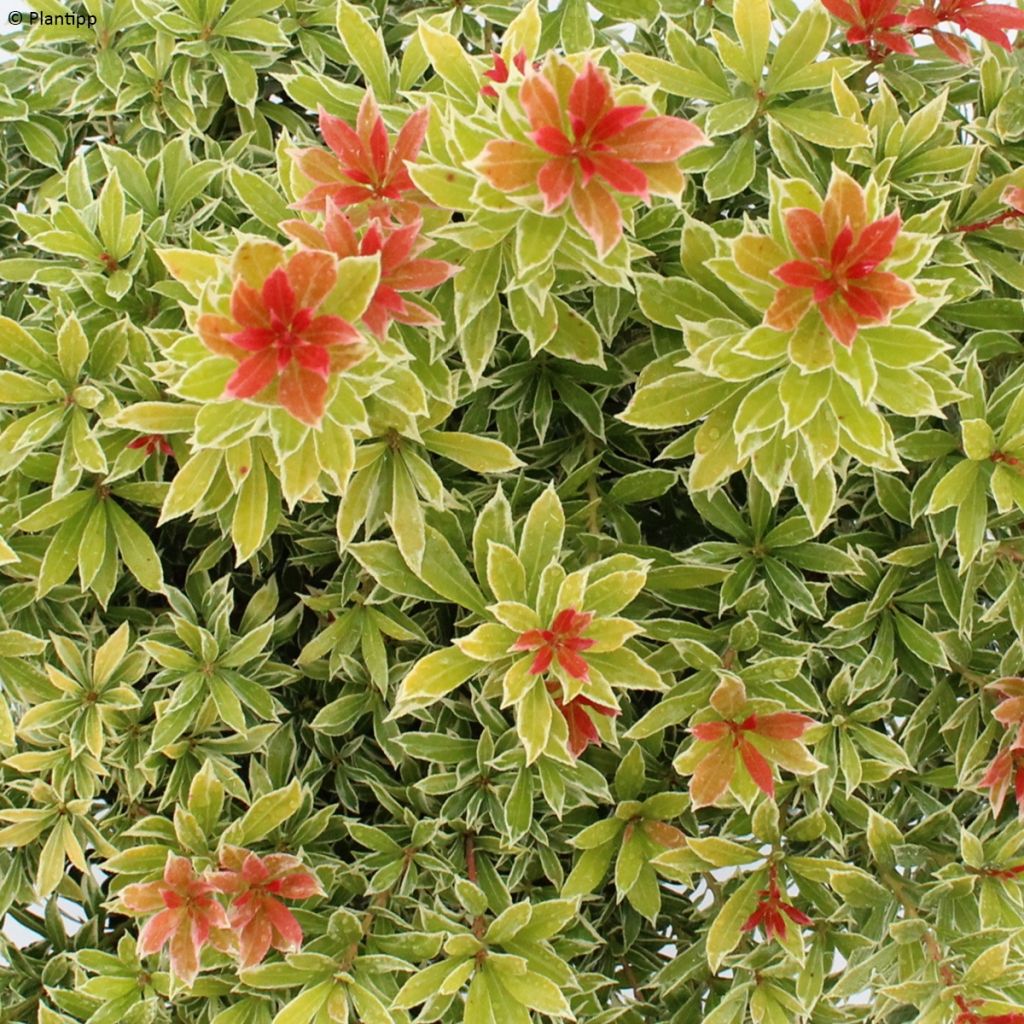

Andromède du Japon - Pieris japonica Little Goldy®
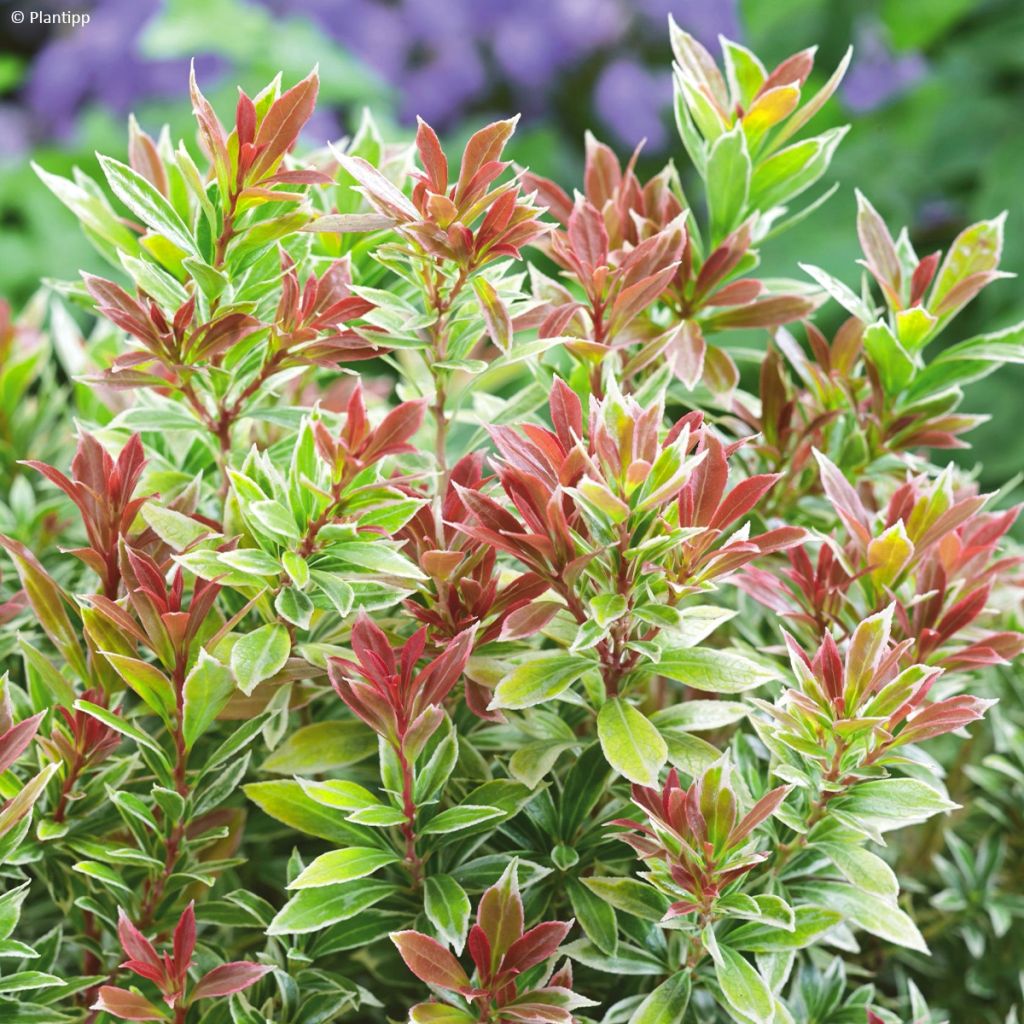

Andromède du Japon - Pieris japonica Little Goldy®
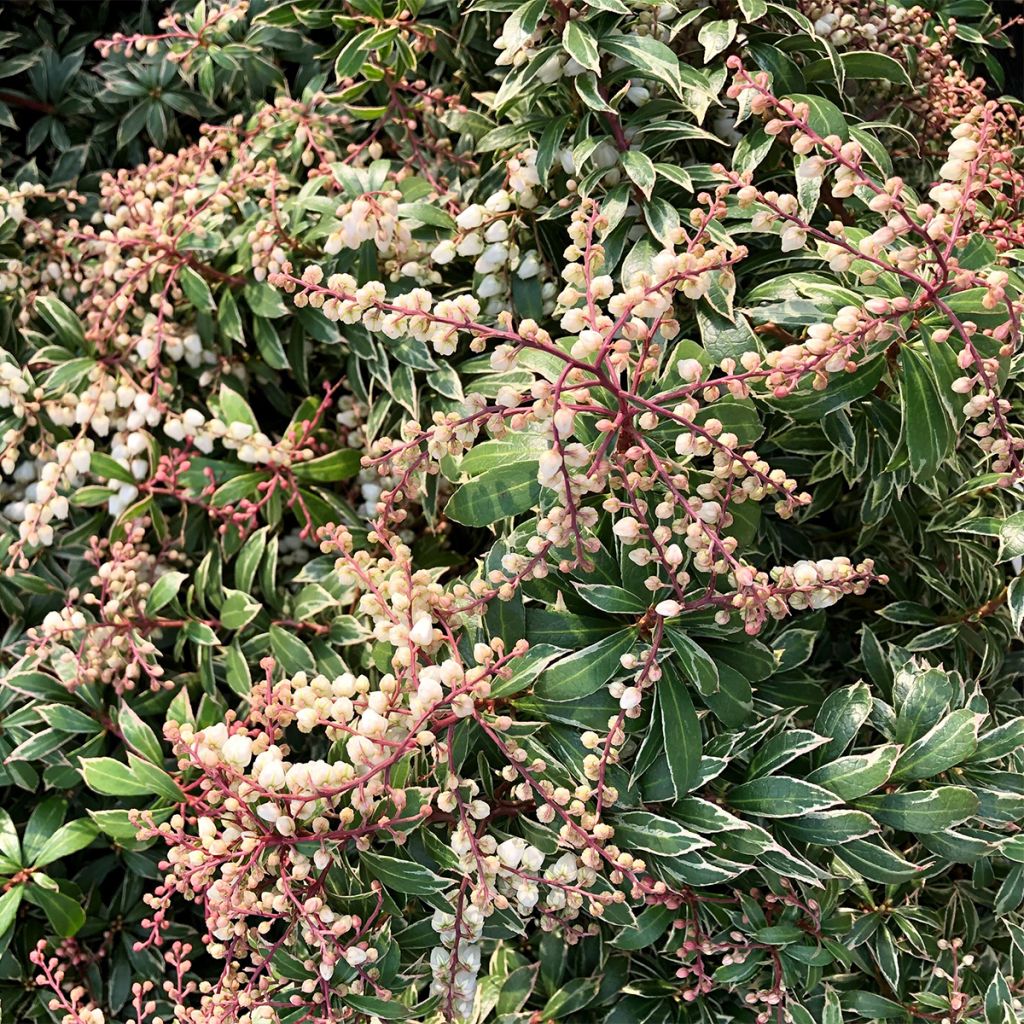

Andromède du Japon - Pieris japonica Little Goldy
Pieris japonica Little Goldy - Japanese Andromeda
Pieris japonica Little Goldy (‘Opstal 65’PBR)
Japanese Andromeda, Japanese Pieris, Lily-of-the-Valley Bush
This item cannot be shipped to the selected country
Delivery charge from €5.90
More information
Schedule delivery date,
and select date in basket
This plant carries a 24 months recovery warranty
More information
We guarantee the quality of our plants for a full growing cycle, and will replace at our expense any plant that fails to recover under normal climatic and planting conditions.
From €5.90 for pickup delivery and €6.90 for home delivery
Express home delivery from €8.90.

Does this plant fit my garden?
Set up your Plantfit profile →
Description
Pieris japonica 'Little Goldy' (or Japanese Andromeda) is a recently obtained variety from the Netherlands that stands out with its superb variegated foliage of changing colours and a particularly compact habit. These qualities make this small bush ideal for ornamenting terraces and small semi-shaded gardens. Its abundant spring blooms, white in colour, are an additional asset. Changing from coppery pink to green with yellow edges, then to golden and finally to green with white edges, its festive foliage is interesting all year round.
Pieris belong to the family of Ericaceae, like heathers and rhododendrons. They are evergreen shrubs that thrive in acid, light soil that remains moist, in a partially shaded or sunny (but not scorching) site. The varieties derived from Pieris japonica are hardy once established.
The Japanese Andromeda 'Little Goldy' is very dense and almost spherical. The bush will reach about 50 cm (20 in) in all dimensions after 8 years. Its growth is slow. Eventually, it will reach dimensions of about 80 cm (32 in) in all directions. Its young shoots are coloured coppery pink and white, unfolding into small lanceolate leaves with yellow edges on a green background, glossy on their upper surface. In summer, the foliage takes on beautiful golden hues. In autumn and winter, the leaves are green with creamy white edges. Its white blooms, honey-scented and slightly fragrant, consist of rather upright clusters filled with a multitude of small urn-shaped flowers, preceded by decorative pink buds in winter. Flowering occurs from April to May.
With its slow growth and naturally compact habit, 'Little Goldy' requires little pruning and maintenance, making it perfect for small gardens whether in pots and containers, in rockeries, or as a border for flower beds. An indispensable and superb evergreen bush in acidic soil, with the same charm as shrubby heathers but without their slightly austere aspect once flowering is over, it naturally and elegantly blends with Rhododendrons and Azaleas, surrounded by a mass of hellebores, ferns, and Pernettya.
Report an error about the product description
Pieris japonica Little Goldy - Japanese Andromeda in pictures


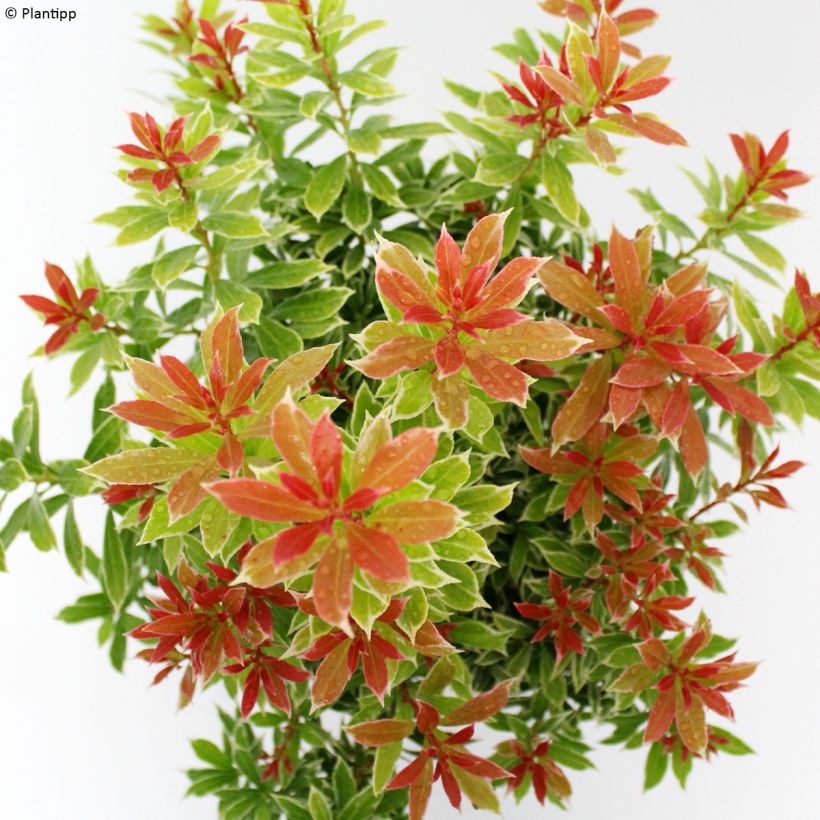

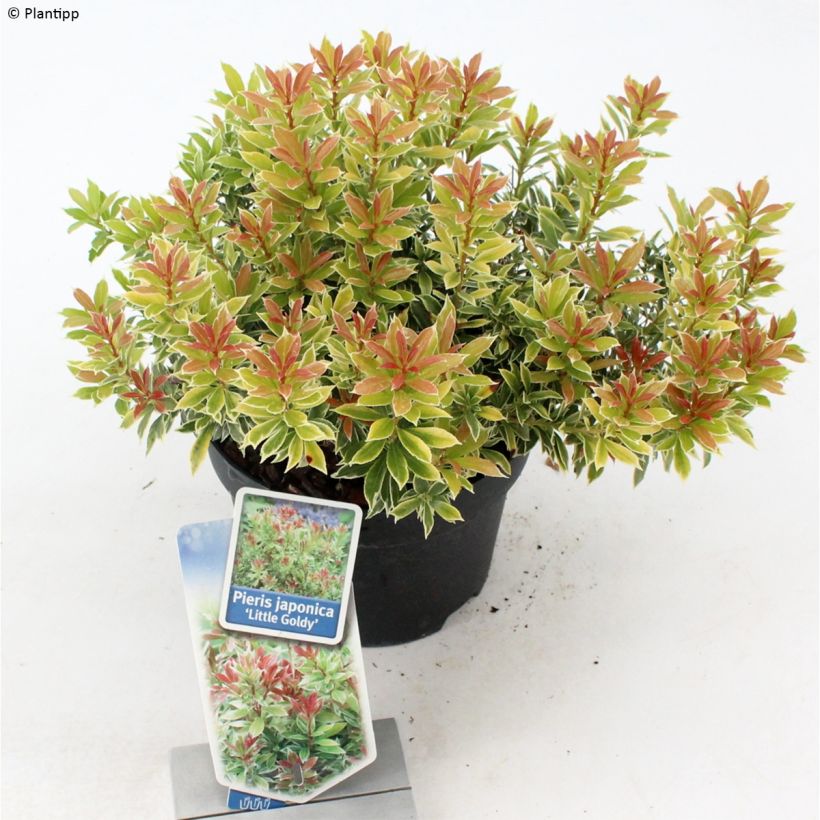

Plant habit
Flowering
Foliage
Botanical data
Pieris
japonica
Little Goldy (‘Opstal 65’PBR)
Ericaceae
Japanese Andromeda, Japanese Pieris, Lily-of-the-Valley Bush
Cultivar or hybrid
Other Pieris
Planting and care
Pieris Little Goldy will grow in acidic but rather fertile and moist soil. You can add an ericaceous medium when planting if your soil is neutral, which will also help to lighten it. They require a non-scorching site (morning sun) or partial shade, and protection from cold drafts. They prefer a soil that remains moist but well-drained. A good mulch (such as pine bark) can help maintain soil acidity and moisture in summer. If you have heavy and/or chalky soil, grow your Japanese Andromeda 'Pink Passion' in a container and ideally water it with non-calcareous water. Otherwise, it is a low-maintenance and disease resistant plant that should only be pruned in extreme necessity.
Planting period
Intended location
Care
-
, onOrder confirmed
Reply from on Promesse de fleurs
Evergreen shrubs
Haven't found what you were looking for?
Hardiness is the lowest winter temperature a plant can endure without suffering serious damage or even dying. However, hardiness is affected by location (a sheltered area, such as a patio), protection (winter cover) and soil type (hardiness is improved by well-drained soil).

Photo Sharing Terms & Conditions
In order to encourage gardeners to interact and share their experiences, Promesse de fleurs offers various media enabling content to be uploaded onto its Site - in particular via the ‘Photo sharing’ module.
The User agrees to refrain from:
- Posting any content that is illegal, prejudicial, insulting, racist, inciteful to hatred, revisionist, contrary to public decency, that infringes on privacy or on the privacy rights of third parties, in particular the publicity rights of persons and goods, intellectual property rights, or the right to privacy.
- Submitting content on behalf of a third party;
- Impersonate the identity of a third party and/or publish any personal information about a third party;
In general, the User undertakes to refrain from any unethical behaviour.
All Content (in particular text, comments, files, images, photos, videos, creative works, etc.), which may be subject to property or intellectual property rights, image or other private rights, shall remain the property of the User, subject to the limited rights granted by the terms of the licence granted by Promesse de fleurs as stated below. Users are at liberty to publish or not to publish such Content on the Site, notably via the ‘Photo Sharing’ facility, and accept that this Content shall be made public and freely accessible, notably on the Internet.
Users further acknowledge, undertake to have ,and guarantee that they hold all necessary rights and permissions to publish such material on the Site, in particular with regard to the legislation in force pertaining to any privacy, property, intellectual property, image, or contractual rights, or rights of any other nature. By publishing such Content on the Site, Users acknowledge accepting full liability as publishers of the Content within the meaning of the law, and grant Promesse de fleurs, free of charge, an inclusive, worldwide licence for the said Content for the entire duration of its publication, including all reproduction, representation, up/downloading, displaying, performing, transmission, and storage rights.
Users also grant permission for their name to be linked to the Content and accept that this link may not always be made available.
By engaging in posting material, Users consent to their Content becoming automatically accessible on the Internet, in particular on other sites and/or blogs and/or web pages of the Promesse de fleurs site, including in particular social pages and the Promesse de fleurs catalogue.
Users may secure the removal of entrusted content free of charge by issuing a simple request via our contact form.
The flowering period indicated on our website applies to countries and regions located in USDA zone 8 (France, the United Kingdom, Ireland, the Netherlands, etc.)
It will vary according to where you live:
- In zones 9 to 10 (Italy, Spain, Greece, etc.), flowering will occur about 2 to 4 weeks earlier.
- In zones 6 to 7 (Germany, Poland, Slovenia, and lower mountainous regions), flowering will be delayed by 2 to 3 weeks.
- In zone 5 (Central Europe, Scandinavia), blooming will be delayed by 3 to 5 weeks.
In temperate climates, pruning of spring-flowering shrubs (forsythia, spireas, etc.) should be done just after flowering.
Pruning of summer-flowering shrubs (Indian Lilac, Perovskia, etc.) can be done in winter or spring.
In cold regions as well as with frost-sensitive plants, avoid pruning too early when severe frosts may still occur.
The planting period indicated on our website applies to countries and regions located in USDA zone 8 (France, United Kingdom, Ireland, Netherlands).
It will vary according to where you live:
- In Mediterranean zones (Marseille, Madrid, Milan, etc.), autumn and winter are the best planting periods.
- In continental zones (Strasbourg, Munich, Vienna, etc.), delay planting by 2 to 3 weeks in spring and bring it forward by 2 to 4 weeks in autumn.
- In mountainous regions (the Alps, Pyrenees, Carpathians, etc.), it is best to plant in late spring (May-June) or late summer (August-September).
The harvesting period indicated on our website applies to countries and regions in USDA zone 8 (France, England, Ireland, the Netherlands).
In colder areas (Scandinavia, Poland, Austria...) fruit and vegetable harvests are likely to be delayed by 3-4 weeks.
In warmer areas (Italy, Spain, Greece, etc.), harvesting will probably take place earlier, depending on weather conditions.
The sowing periods indicated on our website apply to countries and regions within USDA Zone 8 (France, UK, Ireland, Netherlands).
In colder areas (Scandinavia, Poland, Austria...), delay any outdoor sowing by 3-4 weeks, or sow under glass.
In warmer climes (Italy, Spain, Greece, etc.), bring outdoor sowing forward by a few weeks.

































